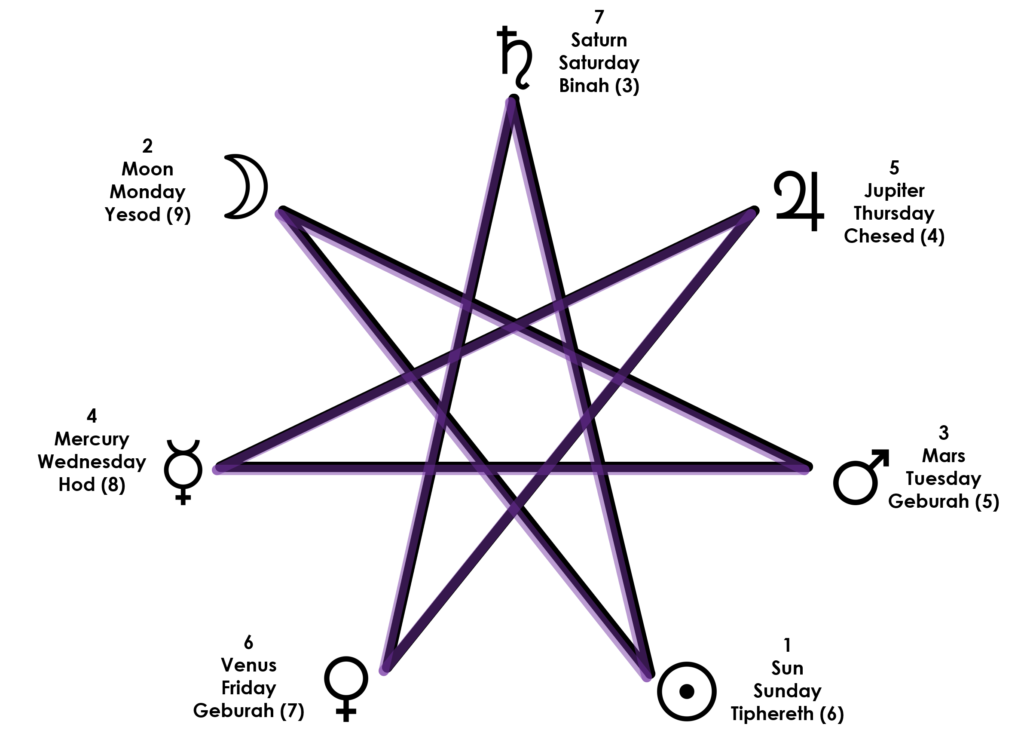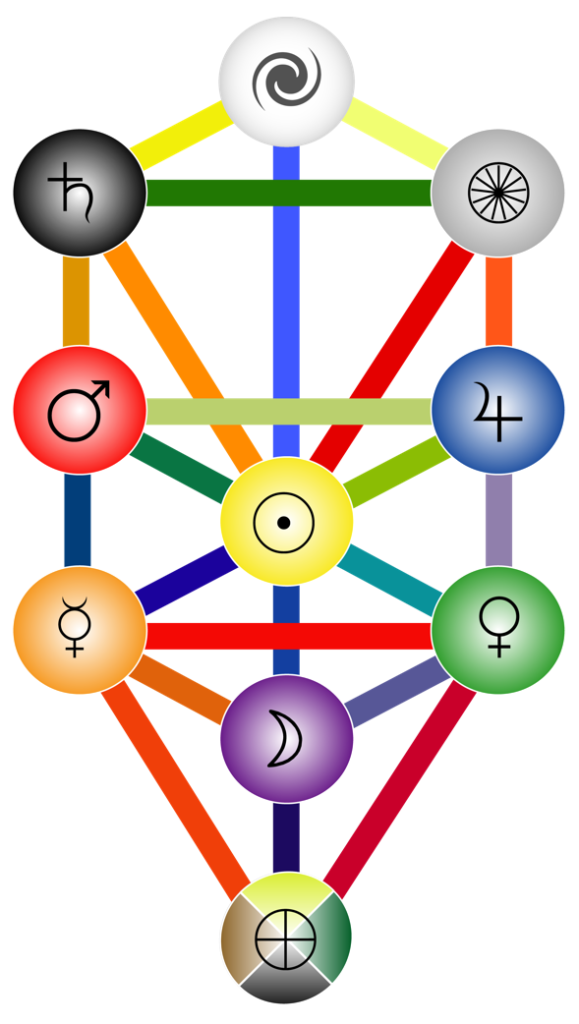The idea of the music or harmony of the spheres date back to ancient Greece among the Pythagoreans, who saw the universe as a harmonious or ordered whole, governed by the principles of numbers and balance. They believed that the Divine was encapsulated in the Tetraktys, which is the sum of the first four integers (1 + 2 + 3 + 4 = 10). This “Decad” symbolized both the totality of existence and the fundamental essence or completeness of all things. Their curiosity also extended into the realms of astronomy, astrology, and cosmology, which they placed at the intersection of physical and metaphysical exploration.
The Pythagoreans posited that as stars moved through the cosmos, they produced sound, leading them to assign musical notes to the so-called esoteric “seven planets” of the heavens.
| Esoteric Planet | Musical Note | Week Day |
| Sun | E | Sunday/Domingues |
| Mercury | F | Wednesday/Miercoles |
| Venus | G | Friday/Viernes |
| Moon | A | Monday/Lunes |
| Mars | D | Tuesday/Martes |
| Jupiter | C | Thursday/Jueves |
| Saturn | B | Saturday/Sabado |
Also these early principles relating to days of the week and musical notes carried forward into occult symbology, Arabic numbering shapes and Qabalah.



Some of the sources:
https://en.wikipedia.org/wiki/Pythagoreanism#Music_and_harmony
https://en.wikipedia.org/wiki/Musica_universalis